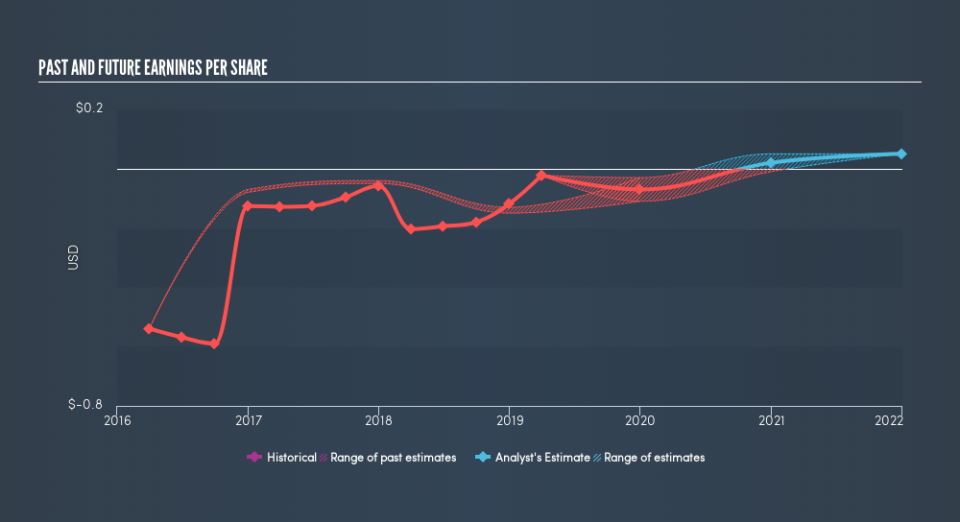Harvard Bioscience, Inc.'s (NASDAQ:HBIO) Shift From Loss To Profit

Want to participate in a short research study? Help shape the future of investing tools and you could win a $250 gift card!
Harvard Bioscience, Inc.'s (NASDAQ:HBIO): Harvard Bioscience, Inc. provides scientific instruments, systems, software, and services used in life science basic research, drug discovery, and clinical and environmental testing. With the latest financial year loss of -US$4.3m and a trailing-twelve month of -US$819.0k, the US$78m market-cap alleviates its loss by moving closer towards its target of breakeven. Many investors are wondering the rate at which HBIO will turn a profit, with the big question being “when will the company breakeven?” In this article, I will touch on the expectations for HBIO’s growth and when analysts expect the company to become profitable.
Check out our latest analysis for Harvard Bioscience
Consensus from the 2 Life Sciences analysts is HBIO is on the verge of breakeven. They anticipate the company to incur a final loss in 2019, before generating positive profits of US$850k in 2020. HBIO is therefore projected to breakeven around a couple of months from now! In order to meet this breakeven date, I calculated the rate at which HBIO must grow year-on-year. It turns out an average annual growth rate of 100% is expected, which signals high confidence from analysts. Should the business grow at a slower rate, it will become profitable at a later date than expected.
I’m not going to go through company-specific developments for HBIO given that this is a high-level summary, though, keep in mind that typically a life science company has lumpy cash flows which are contingent on the product and stage of development the company is in. So, a high growth rate is not out of the ordinary, particularly when a company is in a period of investment.
Before I wrap up, there’s one issue worth mentioning. HBIO currently has a relatively high level of debt. Typically, debt shouldn’t exceed 40% of your equity, which in HBIO’s case is 71%. A higher level of debt requires more stringent capital management which increases the risk around investing in the loss-making company.
Next Steps:
This article is not intended to be a comprehensive analysis on HBIO, so if you are interested in understanding the company at a deeper level, take a look at HBIO’s company page on Simply Wall St. I’ve also put together a list of relevant aspects you should further research:
Valuation: What is HBIO worth today? Has the future growth potential already been factored into the price? The intrinsic value infographic in our free research report helps visualize whether HBIO is currently mispriced by the market.
Management Team: An experienced management team on the helm increases our confidence in the business – take a look at who sits on Harvard Bioscience’s board and the CEO’s back ground.
Other High-Performing Stocks: Are there other stocks that provide better prospects with proven track records? Explore our free list of these great stocks here.
We aim to bring you long-term focused research analysis driven by fundamental data. Note that our analysis may not factor in the latest price-sensitive company announcements or qualitative material.
If you spot an error that warrants correction, please contact the editor at editorial-team@simplywallst.com. This article by Simply Wall St is general in nature. It does not constitute a recommendation to buy or sell any stock, and does not take account of your objectives, or your financial situation. Simply Wall St has no position in the stocks mentioned. Thank you for reading.

